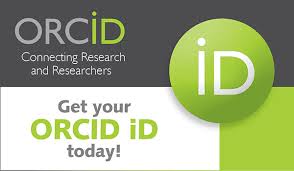Elevación de seno maxilar unilateral con técnica de ventana lateral y cirugía guiada de implantes dentales: reporte de un caso clínico
Resumen
La elevación del piso del seno maxilar con técnica de ventana lateral es una opción quirúrgica avanzada en casos de atrofia ósea severa y neumatización del seno maxilar. Este reporte describe el manejo integral de un caso clínico que incluyó extracción atraumática, regeneración ósea guiada y colocación de implantes dentales con cirugía guiada. Los resultados muestran éxito en la regeneración ósea y estabilidad funcional de los implantes. Este caso resalta la importancia de una planificación interdisciplinaria y el uso de tecnología avanzada para optimizar resultados.
Palabras clave
Referencias
Buser D, Sennerby L, De Bruyn H. 2017. Modern implant dentistry based on osseointegration: 50 years of progress, current trends and open questions. Periodontol 2000. 73(1):7–21.
Jensen OT. The sinus bone graft. Batavia, Il: Quintessence Publishing Co Inc; 2019.
Pjetursson BE, Tan WC, Zwahlen M, et al. (2012) A systematic review of the success of sinus floor elevation and survival of implants inserted in combination with sinus floor elevation. J Clin Periodontol. 39 Suppl 12: 206-227.
Rosen PS, Summers R, Mellado JR, et al. (1999) The bone-added osteotome sinus floor elevation technique: multicenter retrospective report of consecutively treated patients. Int J Oral Maxillofac Implants. 14(6): 853-858.
Wallace SS, Froum SJ. (2003) Effect of maxillary sinus augmentation on the survival of endosseous dental implants. A systematic review. Ann Periodontol. 8(1): 328-343.
Sohn DS, Lee WH, Kim DK, et al. (2012) The efficacy of ultrasonic instruments in the surgical treatment of sinus floor elevation: a systematic review. J Oral Maxillofac Surg. 70(11): 2575-2581.
Benic, G. I., Eisner, B. M., Jung, R. E., Basler, T., Schneider, D., & Hämmerle, C.H. (2019). Hard tissue changes after guided bone regeneration of peri‐implant defects comparing block versus particulate bone substitutes: 6‐month results of a randomized controlled clinical trial. Clinical oral implants research, 30(10), 1016-1026.
Seibert JS. Reconstruction of deformed, partially edentulous ridges, using full thickness onlay grafts. Part I. Technique and wound healing. Compend Contin Educ Dent 1983 Sep-Oct; 4(5):437-53. 16. Jepsen, S., Schwarz, F., Cordaro, L., Derks, J., Hämmerle, C. H., Heitz‐Mayfield, L. J., & Pjetursson, B. (2019). Regeneration of alveolar ridge defects. Consensus report of group 4 of the 15th European Workshop on Periodontology on Bone Regeneration. Journal of clinical periodontology, 46, 277-286.
Basler, T., Naenni, N., Schneider, D., Hämmerle, C. H., Jung, R. E., & Thoma, D. S. (2018). Randomized controlled clinical study assessing two membranes for guided bone regeneration of peri‐implant bone defects: 3‐year results. Clinical oral implants research, 29(5), 499-507.
Matsuno H, Yokoyama A, Watari F, Uo M, Kawasaki T. Biocompatibility and osteogenesis of refractory metal implants, titanium, hafnium, niobium, tantalum and rhenium. Biomaterials 2001; 22: 1253-1262.
Gapski R, Wang HL, Mascarenhas P, Lang N. Critical review of immediate implant loading. Clin. Oral Impl. Res. 2003; 14: 515-527.
Benic, G. I., Eisner, B. M., Jung, R. E., Basler, T., Schneider, D., & Hämmerle, C.H. (2019). Hard tissue changes after guided bone regeneration of peri‐implant defects comparing block versus particulate bone substitutes: 6‐month results of a randomized controlled clinical trial. Clinical oral implants research, 30(10), 1016-1026.
Buser D, Chappuis V, Belser UC, Chen S. Implant placement post extraction in esthetic single tooth sites: when immediate, when early, when late? Periodontology 2000. 2016 Dec 21;73(1):84–102.
Canellas JV dos S, Medeiros PJD, Figueredo CM da S, Fischer RG, Ritto FG. Which is the best choice after tooth extraction, immediate implant placement or delayed placement with alveolar ridge preservation? A systematic review and meta-analysis. Journal of Cranio-Maxillofacial Surgery. 2019 Nov;47(11):1793–802.
Chen P, Nikoyan L. Guided Implant Surgery. Dental Clinics of North America. 2021 Jan;65(1):67–80.
Al Yafi F, Camenisch B, Al-Sabbagh M. Is Digital Guided Implant Surgery Accurate and Reliable? Dental Clinics of North America. 2019 Jul;63(3):381–97.
Lanis A, Alvarez del Canto O. The Combination of Digital Surface Scanners and Cone Beam Computed Tomography Technology for Guided Implant Surgery Using 3Shape Implant Studio Software: A Case History Report. International Journal of Prosthodontics. 2015 Mar;28(2):169–78.
Al Yafi F, Camenisch B, Al-Sabbagh M. Is Digital Guided Implant Surgery Accurate and Reliable? Dental Clinics of North America. 2019 Jul;63(3):381–97.
Joda T, Zarone F, Ferrari M. (2016) The complete digital workflow in fixed prosthodontics: a systematic review. BMC Oral Health. 16: 105.
Schneider D, Marquardt P, Zwahlen M, Jung RE. (2015) A systematic review on the accuracy and the clinical outcome of computer-guided template-based implant dentistry. Clin Oral Implants Res. 26 Suppl 11: 69-78.
Cho-Lee GY, Naval-Gías L, Mancha de la Plata M, Sastre-Pérez J, Capote-Moreno AL, Muñoz-Guerra MF, et al. Elevación de seno maxilar: Análisis clínico de nuestra experiencia en más de 100 casos. Revista Española de Cirugía Oral y Maxilofacial.
DOI: https://doi.org/10.23857/pc.v10i2.8971
Enlaces de Referencia
- Por el momento, no existen enlaces de referencia
Polo del Conocimiento
Revista Científico-Académica Multidisciplinaria
ISSN: 2550-682X
Casa Editora del Polo
Manta - Ecuador
Dirección: Ciudadela El Palmar, II Etapa, Manta - Manabí - Ecuador.
Código Postal: 130801
Teléfonos: 056051775/0991871420
Email: polodelconocimientorevista@gmail.com / director@polodelconocimiento.com
URL: https://www.polodelconocimiento.com/













